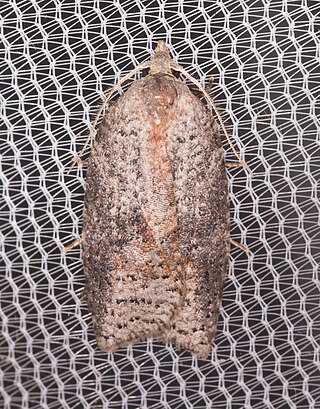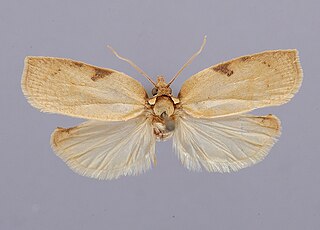
Amorbia is a genus of moths belonging to the subfamily Tortricinae of the family Tortricidae.

Amorbia emigratella, the Mexican leaf-roller, is a moth of the family Tortricidae. Although it was described from Hawaii, it is known to be a native of the southern United States, Mexico and Central America. It was first described by August Busck in 1910.
Amorbia colubrana is a species of moth of the family Tortricidae. It is found in Ecuador, Peru and Colombia. It is found at altitudes above 2,000 meters.
Amorbia cacoa is a species of moth of the family Tortricidae. It is found in Costa Rica, Guatemala and Napo Province, Ecuador. It is found at altitudes between 1,000 and 1,400 meters.
Amorbia trisecta is a species of moth of the family Tortricidae. It is found in Peru.
Amorbia curitiba is a species of moth of the family Tortricidae. It is found in Paraná, Brazil.
Amorbia revolutana is a species of moth of the family Tortricidae. It is found in Ecuador, Bolivia, Costa Rica, Cuba, Panama and Venezuela.
Amorbia dominicana is a species of moth of the family Tortricidae. It is endemic to Dominica.

Amorbia humerosana, the white-lined leafroller, is a species of moth of the family Tortricidae. It is found from the Gulf states to the northeastern United States and southeastern Canada.

Amorbia cuneanum, the western avocado leafroller moth, is a species of moth of the family Tortricidae. It is found from Baja California, Mexico, to south-western Canada. To the east, the range extends to Arizona and Idaho in the United States.
Amorbia potosiana is a species of moth of the family Tortricidae. It is found on the mountain Cerro Potosí in Nuevo León, Mexico, at altitudes of about 2,000 meters.
Amorbia knudsoni is a species of moth of the family Tortricidae. It is found in the United States in western Texas, where it is found at altitudes between 1,700 to 1,900 meters.
Amorbia exustana is a species of moth of the family Tortricidae. It is found in Colombia and Costa Rica, where it is found at altitudes between 800 and 2,000 meters.
Amorbia nuptana is a species of moth of the family Tortricidae. It is found from Venezuela to Guatemala, where it is found at altitudes between 650 and 1,620 meters.
Amorbia exsectana is a species of moth of the family Tortricidae. It is found from Brazil to Panama, where it is found at altitudes between 1,000 and 1,500 meters.
Amorbia concavana is a species of moth of the family Tortricidae. It is found from Panama to Mexico and on Cuba, where it is found at altitudes between 50 and 300 meters. It has recently found in the United States in southern Florida.
Amorbia rhombobasis is a species of moth of the family Tortricidae. It is found in Bolivia, Brazil, Costa Rica and Venezuela, where it is found at altitudes between 600 and 1,760 meters.
Amorbia chlorolyca is a species of moth of the family Tortricidae. It is found in southern Brazil, where it is found at altitudes between 69 and 500 meters.
Amorbia eccopta is a species of moth of the family Tortricidae. It is found in Costa Rica, Guatemala and Mexico at altitudes between sea level and 1,600 meters.
Amorbia monteverde is a species of moth of the family Tortricidae. It is found from Costa Rica to Veracruz in Mexico, where it is found at altitudes between 1,000 and 1,650 meters.


